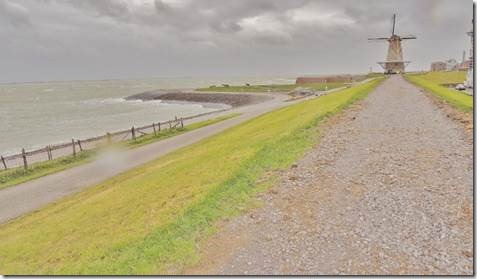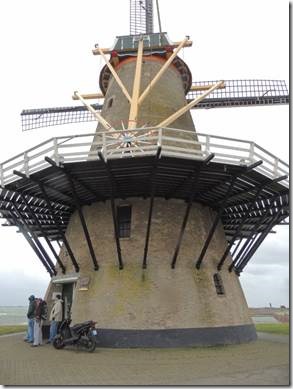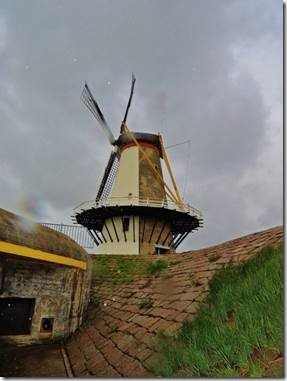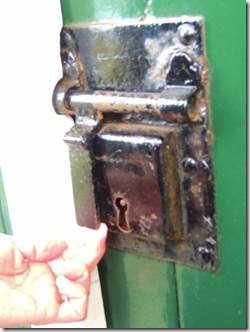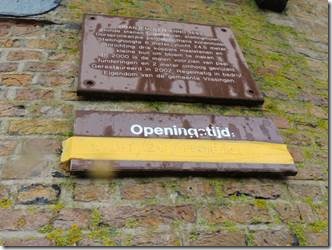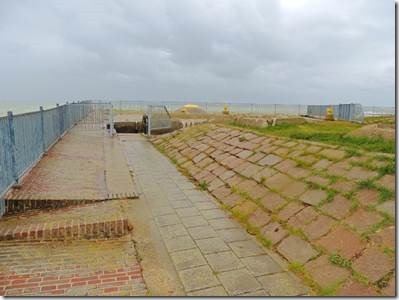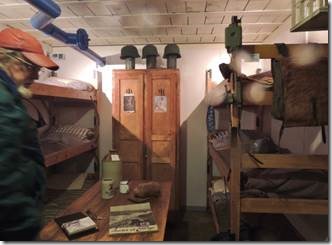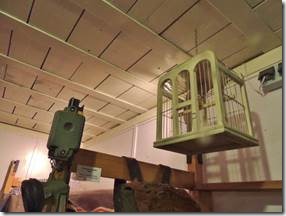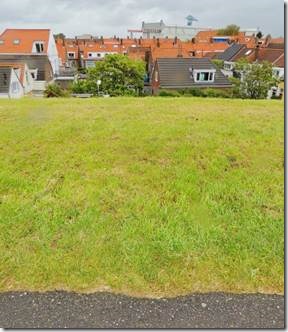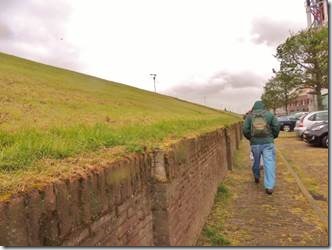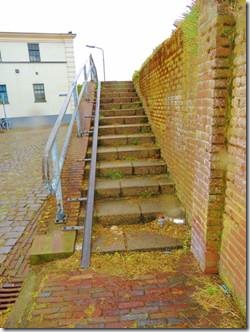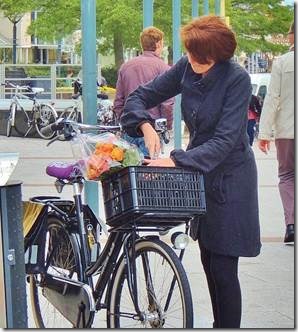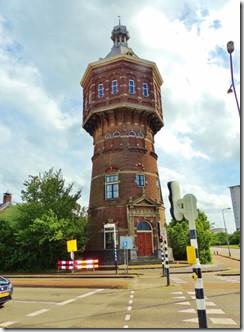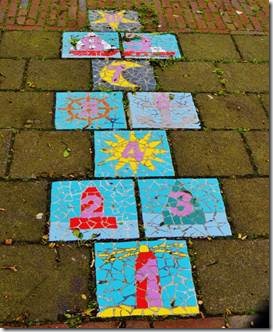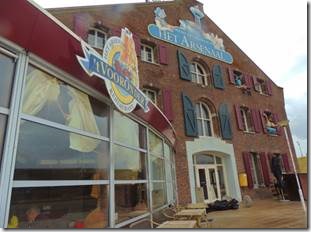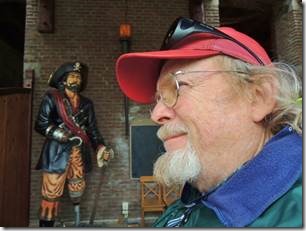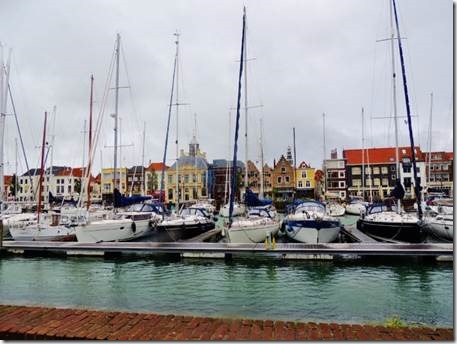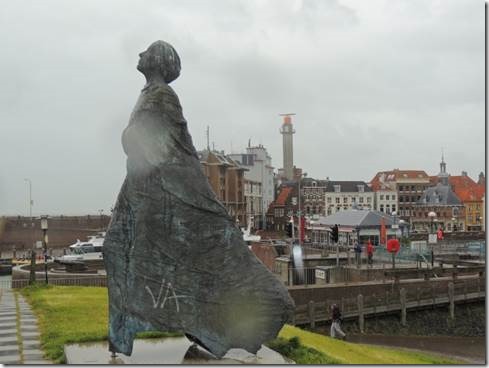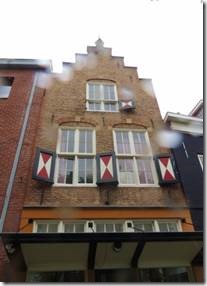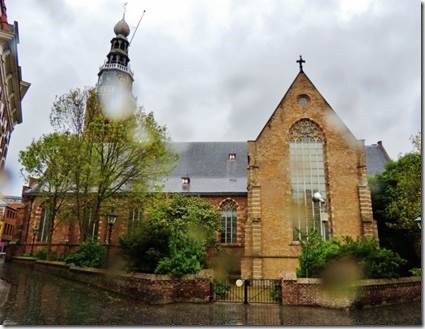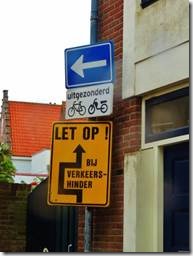Goedenavond,
It is 7:45 pm and the sun is till high in the sky. We hung laundry out to dry at 5 pm and the sun and wind are still working at drying several pairs of jeans. Quite amazing.
Yesterday was the Sunday of National Mill Day weekend. I browbeat everyone into going out into the wind and drizzle just so I could visit a windmill on National Mill Day and write about it. Well it almost worked. We did visit the windmill in Vlissingen, but alas, it was closed for renovation. Rats!
It is very frustrating looking up info about what we see as most sites are only in Dutch. It’s been easier almost anywhere else which seems mind boggling to me as you’d think there would be more English available in Europe than Asia or Turkey. But so far that’s just not true. It’s a real system shock from being in England.
Ru
National Mill Day
The second Saturday and Sunday in May is National Mill Day in Holland. On that day 950 windmills and watermills open their doors to visitors. For centuries, mills have played an important role in reclaiming land, processing raw materials and manufacturing products. Mills barely have any economic value these days, but they are iconic for Holland and still attract a great deal of attention.
Visit a mill
Visit one of 950 mills that open their doors on National Mill Day. Millers make a real effort to decorate their mills as beautifully as possible with flags and flowers. A miller will take you on a tour, providing a good explanation of the type of mill you are visiting. It could happen that you will be asked to give the miller a hand in turning the sails. Fun activities are often organized for children, allowing them to become familiar with the miller’s trade in a playful way.
http://www.holland.com/us/tourism/article/national-mills-day.htm
Vlissingen once had 23 mills, but only the Oranjemolen survived. The mill was probably built in the 17th century and was first mentioned in 1699. The area around the mill has been used as a landing site twice – 1809 in the Napoleonic Wars and 1944 in WWII. Both left some scars in form of bullets and holes in the windmill. In 1971, it was refurbished. It was used to separate the husk from the grain, later to produce flour. The mill is operative and can be visited every Friday and upon request.
http://www.virtualtourist.com/
“One of the first images that comes to mind when people think of Holland, no matter where they are from, is a windmill. Funny enough, windmills are not a Dutch invention at all. So how come they ended up as an icon for everything Dutch? “
http://magazine.dutchancestrycoach.com/
Windmills are said to have existed in Holland from about 1200. The first record we have of drainage mills dates from 1414 (Reijerwaard). Before those days, windmills are mentioned, but these must have been corn mills……..
After 1400, when major sea-defenses had been first constructed and the communication of several waters with the open sea had been dammed up, it became possible to drain pools and lakes. For this purpose windmills were used, and accordingly were built in constantly increasing numbers. At first these were not yet the large mills as we know them, which date especially from the seventeenth century, but smaller mills of the hollow post-mill type. …..
As windmills grew better and larger their water-lifting capacity increased and they became more numerous. According to the records it was about 1526 that a wip mill was replaced by an octagonal smock mill with a revolving cap. This must have had a winch in the cap, for it was not until the second half of the sixteenth century that smock mills with tail poles were constructed. After that, the possibilities increased rapidly. We find entries about the first oil mill in 1582, a paper mill in 1586, a timber sawmill in 1592; after 1600 windmills arose everywhere and were constructed for a wide variety of purposes.
In the nineteenth century there were about 9,000 windmills in Holland; all these turning sails and the general activity to which they bore witness must have produced an overwhelming and unforgettable impression on the Dutch themselves as well as on foreigners. They imparted a special character to the country. In the Zaan district alone 900 windmills were working virtually night and day; they powered the industries of those days, and they were the precursors of the later big foodstuff industries, the paper works, and the saw-mill yards which exist there to this day.”
http://www.let.rug.nl/polders/boekje/history.htm
|
Drizzle and strong winds didn’t stop me from visiting this windmill on National Mill Day. You can see drops of water on some of these photos. The wind really was fierce right here and I could practically lean forward and not fall over. “The Orange Mill, a flour mill and former Pelmolen the Orange Dike in Vlissingen and because of its geographical location, a good wind catcher as an eye catcher. It is a mill in 1699 is described, and thus should be built sooner. He is covered with roofing felt and has a flight of 24.50 / 24.60 meter . The mill was once proficient, and is still used to grind grain on a voluntary basis. Of the 23 mills town of Vlissingen, the Orange Mill the only one left. It is the closest beach to the grinder Netherlands . Several times, the mill suffered in war. A bullet from the British fleet in 1809 was still in the southwest side of the mill wall there. There are still traces of the Second World War to find – the Allies landed in 1944 near the mill.” |
|
Oranjemolen Orange Mill I’m guessing for a color and not for the food as the word for the edible orange is sinaasappels. We huddled out of the wind and drizzle at the locked door of the Windmill. How disappointing! |
|
A lock to a lock. Normally open on Fridays, this mill was closed for renovations so not open this National Mill Day. |
|
Bunker Museum “The Bunker Preservation Foundation has equipped a number of bunkers at Walcheren in which the Atlantikwall is central. Also considerable attention is devoted to the battle that led to the liberation in November 1944 at the mouth of the Westerschelde. This battle is known as the Battle of the Schelde” http://vlissingen.com/en/museum/108/bunker-museum.html http://www.battlefieldsww2.com/Vlissingen.html tells about the defenses and battles along this coast. Interesting to me is that the bunkers and defenses were built by the Germans to prevent Allied landings and the Allies were the ones who bombed the dikes flooding the poldars with seawater. http://static.nai.nl/polders/e/ describes what is meant by a poldar. We could only stand to be inside a short time as the fumes from the coal stove were hard to stomach. |
|
Rebuilt Dikes behind the windmill and Bunker Museum |
|
Stairs leading down from the dike with a “bicycle rail” and a bicycle basket with roses bought at the Saturday market we visited the day before. |
|
Water Tower now a holiday apartment for rent. http://www.tourist-paradise.com/vacation-rental-o52446.html The Water tower at the badhuisstraat was constructed in 1894. Its height is 35 meters and the reservoir is 300 m³. The building is a National monument. |
|
Seaside Hopscotch embedded in the sidewalk |
|
The weather was rainy and very windy so we ducked into the closest place after the Bunker Museum for coffee. It was a do-it-yourself cappuccino machine. Het Arsenal…. Don’t get me started and pirate themed parks…. So this is from tripadvisor. “The pirate adventure show was very 80ish style and would really benefit from an update. Available only in Dutch with German subtitles makes it difficult for the kids to follow. The area where the kids can touch sting rays is very interesting. Good option if the weather does not play along, mainly for younger kids. Just be aware this is not cheap – approx 50 Euros for a family of four.” |
|
Marina in the city center on a dreary weather day. |
|
De Vissersvrouw : The Fisherman’s Wife by Herman Bisschop 1985 : sometimes referred to as “The Bride.” She is looking out to sea with the city behind her. |
|
Lots of decorative touches on the buildings. The shutter pattern is that of an hourglass. “zandloper luiken (hourglass shutters) also known as simply zandlopers. These zandloper luiken are usually painted in the colours wit (white) and rood (red) and are typical throughout the Netherlands” http://stoked4life2.blogspot.nl/2013/01/zandloper-luiken.html |
|
Sint Jacobskerk (St. Jacob’s Church) Vlissingen’s main church dates from 1328 but took its present shape in the 16th century. The region was one of the first to accept the Protestant faith and the first Protestant service took place in 1572. Have a look at its tower with a medieval base and a renaissance spire. Three of the most recent restorations were results of a fire in 1911, WWII and the 1953 floods (where there height of the water in the church reached almost two metres,) the last larger restoration took place in 1998. It is not that easy to get into the church as they have an irregular opening schedule. Usually, it is Friday and Saturday between 1330 en 1630 – with some extra days in summer and less days in the winter. Chck out their website under the menu point "openstelling". |
|
Bikes and motor bikes share paths with walkers which means I feel much more fear of being run over by someone on two wheels rather than someone driving 4 wheels. As for the yellow sign, I have no idea ! |

